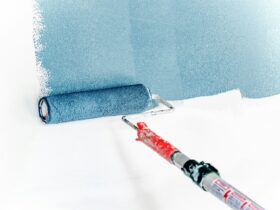Ever find yourself sweating in the living room during a summer heat wave… only to be wrapped in three blankets come January? Keeping a home consistently comfortable is a challenge. Not because people don’t care—but because comfort isn’t just about turning the thermostat up or down. It’s about knowing what works, when to act, and how your house responds to change.
That’s become more obvious in recent years. Between wild weather swings, rising energy costs, and more people working from home, comfort now plays a bigger role in daily life. You feel it when it’s right. You definitely notice when it’s wrong. And for folks in places like Setauket, New York—where muggy summers crash into freezing winters—that comfort gap can get pretty wide, pretty fast.
In this blog, we will share what it really takes to maintain a home that feels good every month of the year, why reactive fixes fall short, and how smarter planning can make all the difference.
More Than Just a Temperature Problem
Let’s be honest. Most of us treat our homes like giant thermostats. If it’s hot, we blast the air. If it’s cold, we crank the heat. But real comfort has more layers than that. Temperature is one part. Humidity, airflow, insulation, and even sunlight make a huge difference. When one of those things is off, it doesn’t just affect how your home feels—it impacts your mood, energy use, and budget.
Think about it: ever walked into a room that’s the “hot zone” of the house? Or a guest bedroom that’s always too cold, even with the door closed? These aren’t random quirks. They’re signs something deeper isn’t working.
That’s where professional help matters. For example, if you live in Setauket and are dealing with uneven cooling or mystery drafts, working with a reliable Setauket AC company can make a serious impact. These local experts know how to look at your home holistically—checking ducts, evaluating insulation, and recommending upgrades that actually stick. They don’t just “fix the unit.” They help your entire system function better.
And these fixes aren’t just about comfort. Efficient heating and cooling mean lower bills, fewer breakdowns, and less stress when a heatwave or cold snap rolls in. That peace of mind is worth more than the sticker price of any equipment.
Why Timing Is Everything
Comfort at home doesn’t just depend on what you install. It depends on when you install it. Seasonal maintenance isn’t a scam—it’s one of the few things you can do to prevent emergencies. A well-timed tune-up in the spring can keep your system from choking in July. A check-in before winter hits can uncover problems before you’re stuck with frozen pipes or a furnace that quits at midnight.
But most homeowners wait. We wait until something breaks. Until the air smells weird. Until the noise coming from the vents sounds less like a fan and more like a dying raccoon. By that point, it’s too late for quick fixes. Now you’re spending more, scrambling for help, and probably sweating while you wait.
Staying ahead doesn’t mean spending a fortune. It means having a plan. Some AC and HVAC companies offer seasonal service packages or inspection deals. These are the kind of low-cost check-ins that help catch small problems early. Think of it like changing the oil in your car. Regular care leads to longer life, fewer surprises, and smoother performance.
Comfort Is Also About Control
Today’s homeowners are also learning that real comfort means having more control. Not just over temperature, but over how the whole system behaves. Smart thermostats, zoned heating and cooling, and remote diagnostics aren’t just for tech lovers anymore. They’re for anyone who’s tired of playing the “thermostat wars” every morning.
Let’s say your upstairs gets boiling hot every summer, while your basement stays cold. Instead of battling the thermostat all day, zoned systems let you set different temperatures for different parts of the house. Add in a smart thermostat and now you can adjust things from your phone—even if you’re on vacation or stuck in traffic.
These systems don’t just add convenience. They help you understand your usage, spot trends, and improve efficiency. Some can even alert you when filters need changing or when airflow is being restricted. It’s a level of insight older setups just can’t offer.
And in a time when energy prices are all over the map, control equals savings. The more precise your system is, the less energy you waste guessing.
Design Matters More Than You Think
You can’t talk about comfort without talking about design. A home that “breathes” well is easier to heat, cool, and maintain. That starts with insulation, window placement, ventilation, and airflow. Many older homes weren’t built for efficiency. They were built to look nice, hold heat, and withstand storms. But that doesn’t mean they can’t be improved.
Today, energy audits are a game changer. These assessments—offered by many HVAC professionals or local utilities—can show you where your home is losing heat, where air escapes, and where insulation falls short. Once you know those pain points, you can fix them with targeted upgrades.
Weather-stripping. Window film. Attic insulation. Sealing crawl spaces. These aren’t sexy upgrades. You won’t post about them on Instagram. But they can radically change how your home feels—and how much you spend to keep it comfortable.
A Comfortable Home Is a Healthier Home
The comfort conversation is also tied to health. Poor airflow or inconsistent temperatures can trigger allergies, worsen asthma, or lead to mold and moisture problems. Dry air in the winter. Sticky air in the summer. These aren’t just annoyances—they’re warning signs.
That’s why more homeowners are adding humidifiers, dehumidifiers, and air purifiers to their systems. It’s not about luxury. It’s about creating a space where people sleep better, breathe easier, and stay healthier. Indoor air quality isn’t a buzzword. It’s a real part of how your home affects your day-to-day life.
And yes, you can overdo it. You don’t need to turn your home into a tech-powered climate lab. But if you’ve got kids, pets, or older adults in the house, paying attention to air quality and balance is worth it.
Putting It All Together
A comfortable home is built on layers—some visible, some not. The right system, installed and maintained on time. Smart controls that respond to your lifestyle. A design that supports airflow and traps the right temperature. And a plan that doesn’t wait for things to break before paying attention.
It’s not about chasing perfection. It’s about knowing what your house needs and making better choices. That might mean swapping out an outdated unit, signing up for seasonal service, or finally upgrading your thermostat to something smarter than a wall dial from 1998.
In the end, comfort isn’t one big fix. It’s a series of small, smart decisions that add up to a home that feels right—no matter the season.
And in a world where the weather’s weird, the bills are high, and home is where we now work, sleep, and unwind all at once, that kind of comfort is more than nice. It’s essential.







